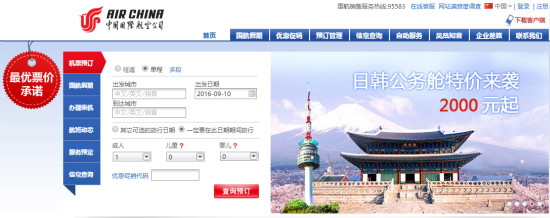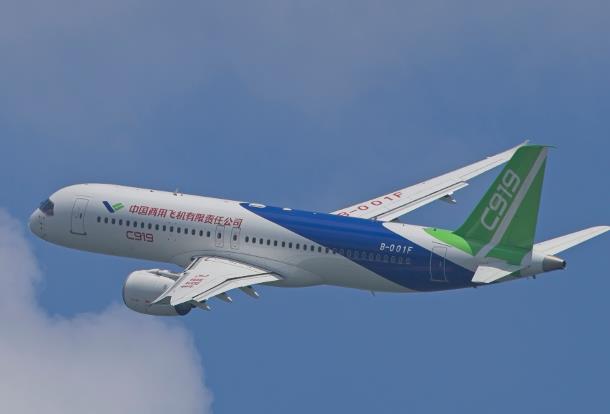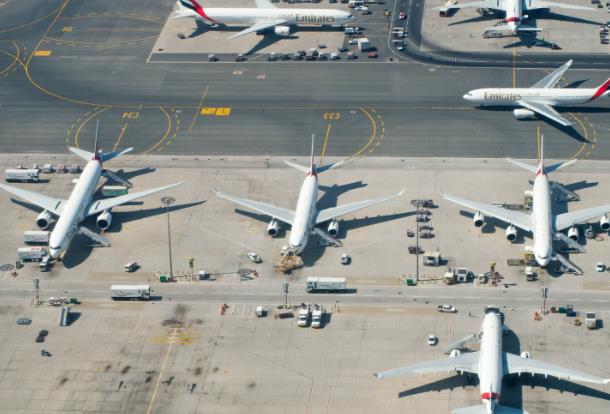By Ritesh Gupta, ChinaTravelNews - Airlines today are counting on the company-owned digital assets for reaping several benefits other than monetizing the traffic that visits. If a mobile App enables a traveler to pay for extra luggage in advance or saves time at the airport, it means the carrier has not only sold an air ancillary but it also serves the customer better.
The situation gets interesting as airlines expand outside China, and in doing so how do they try to attain the originality of their core digital assets, as well as improvise to ensure they get closer to adding local elements, say a chosen alternative payment method, in each of the markets being served. In addition to user experience, one has to smartly drive traffic via remarketing, programmatic advertising etc.
If we talk of expansion, Air China has led the way, introducing 65 routes featuring overseas destinations in 2015. This, according to the group, resulted in a major milestone for the company, with operations covering all six continents.
When we talk of data-driven selling and service, Air China is gearing up for it. “To push different information to different types of passengers is one of our plans in the future,” says Wei Wang, senior manager of global website of Air China. Be it for exclusive offers for registered users or availing push notification based on passengers’ flight information like check-in counter and boarding gate, the group is looking at several levels ways of optimizing each and every interaction.
We assess some of the initiatives taken by Air China for ancillary selling, including via foreign platforms:

Setting up infrastructure and distribution for data-driven selling: Air China has taken several sales and marketing initiatives in the last 12 months for both inbound and outbound foreign travel, including comprehensive marketing campaigns for new routes, refining international sales capabilities of second- and third-tier domestic cities, stepped up marketing on its flagship stores on leading third-party online platforms etc. Also, the overall revenue from “value-added services grew by 8% over the previous year”, primarily due to diversification of the product portfolio and setting up of a new product system focusing on ancillary and value-added services.
We recently interacted with China’s Spring Airlines and it emerged that the objective is strengthen company’s digital assets, with a major focus on becoming the platform of choice for all travel needs, not just flights. This indicates that technology has evolved to a point where monetization and customer experience need to go hand in hand. There are several aspects that airlines need to work on. They need to work on their product mix, looking at mix of non-air ancillaries in addition to selling core air ticket and air ancillaries. Plus, the infrastructure required to support selling of such diverse mix needs to be in place as well. In fact, airlines need to create their respective offering dynamically, to provide consumers with the most relevant offer at any given time, through any point of sale, any channel, direct or indirect and through any device.
Other than deploying new merchandising and IT solutions, airlines also need to ensure there is uniformity in the portfolio of their websites. Air China has 28 international websites. Wei shared that the e-commerce team works with different companies for translation, payment specialists, domain providers etc. The group had updated its user interface on its own, whereas Amadeus is looking at areas like booking flow, payment options etc.
Adding air and non-air ancillaries: According to Wei, the sale of ancillary products has always been one of the company’s focus. “Since May 2015, options to buy additional baggage and paying for selection of seat in advance have been available on the Air China domestic website, meanwhile, the Air China website also supports the reservation of some free services such as online check-in, self-rescheduling in case of travel disruption etc. In addition to being one of the tickets sales channels, the website also serves as efficient customer service and a branding platform,” Wei said. “Ancillary services are critical to success. For example, most of the Air China routes allow customer to check-in one piece of baggage. If customer is willing to purchase one extra baggage allowance, the most convenient way to do so is via the direct online channel. To do so, it may reduce the working pressure on the check-in counter staff and improve customer service.”
Seamless interaction: As for keeping pace with the trends in the mobile arena, Air China’s international website initiated the project of ‘Website Responsive Design’, which ensures that info displayed on CA website would be adjusted automatically according to the size of screens of the mobile devices. Wei shared that for the first half of 2016, almost 9% of the revenue on CA international website came from mobile devices, which means a 26% increase over the same period last year. “Also, since the app and mobile website don’t share the same type of passengers - app is more attracted to the passengers who highly appreciate CA brand and are already or easy to become our FFP member; while passengers of mobile website visit only occasionally our website and show less loyalty than FFP user base and that both channels are important. This year, CA has increased the investment on app, the progress we made so far is that, the number of registered passengers has reached 3.8 million and more than 10 thousand tickets have been sold per day,” shared Wei.
User experience and customer satisfaction: The team acknowledges the significance of user experience, as Wei says, being poor in this arena could mean the traveler opting for OTAs instead.
“User experience closely affects our revenue performance,” stressed Wei. She cited few examples:
a. Customer cannot find targeted air fare or services, we may lose this sales opportunity.
b. Customer wants to reserve a window/ aisle seat during booking, but check-in system could not display seat map properly, we will lose this customer.
c. Website doesn’t support customer preferred payment method, customer will be gone for good.
“Therefore, we should count on user experience and customer feedback as top priorities when designing new products or new booking flow, and we also need to do the full product testing of entire booking/ servicing flow to ensure the system reliability and user-friendly. Unless customer likes the product design and UX, then customer satisfaction and revenue generation cannot improve,” said Wei.
Domestic and international websites:
Talking of international websites, Wei shared:
- Air China is now selling more IET (interlining e-ticketing) to meet customer needs. There are already 25 airlines IET available to sell on international website.
- Fare family rules simplified and modified. Websites, call centre, and sales office are using the same ticketing conditions such as rebooking, refund.
- Online check-in panel is redesigned and upgraded. Customer can fill in API (Advance Passenger Information) themselves. Multi-customers in one booking can check-in at once.
- Student type of ticket fare can be sold online now.
Domestic site:
- Customers can now rebook their flights online in case of disruption.
- QR code check-in is now available, and
- Customers can book discounted round-trip fare for all classes.
App:
- Frequent flyer may use their miles to pay for the ticket fare.
- Pre-paid Extra bag.
- Japanese version is available
Driving traffic: “Re-marketing is an important tool to encourage customer books on the Air China website and app. We have plenty of passenger data and we should think deeply on how to use these massive data,” said Wei.




